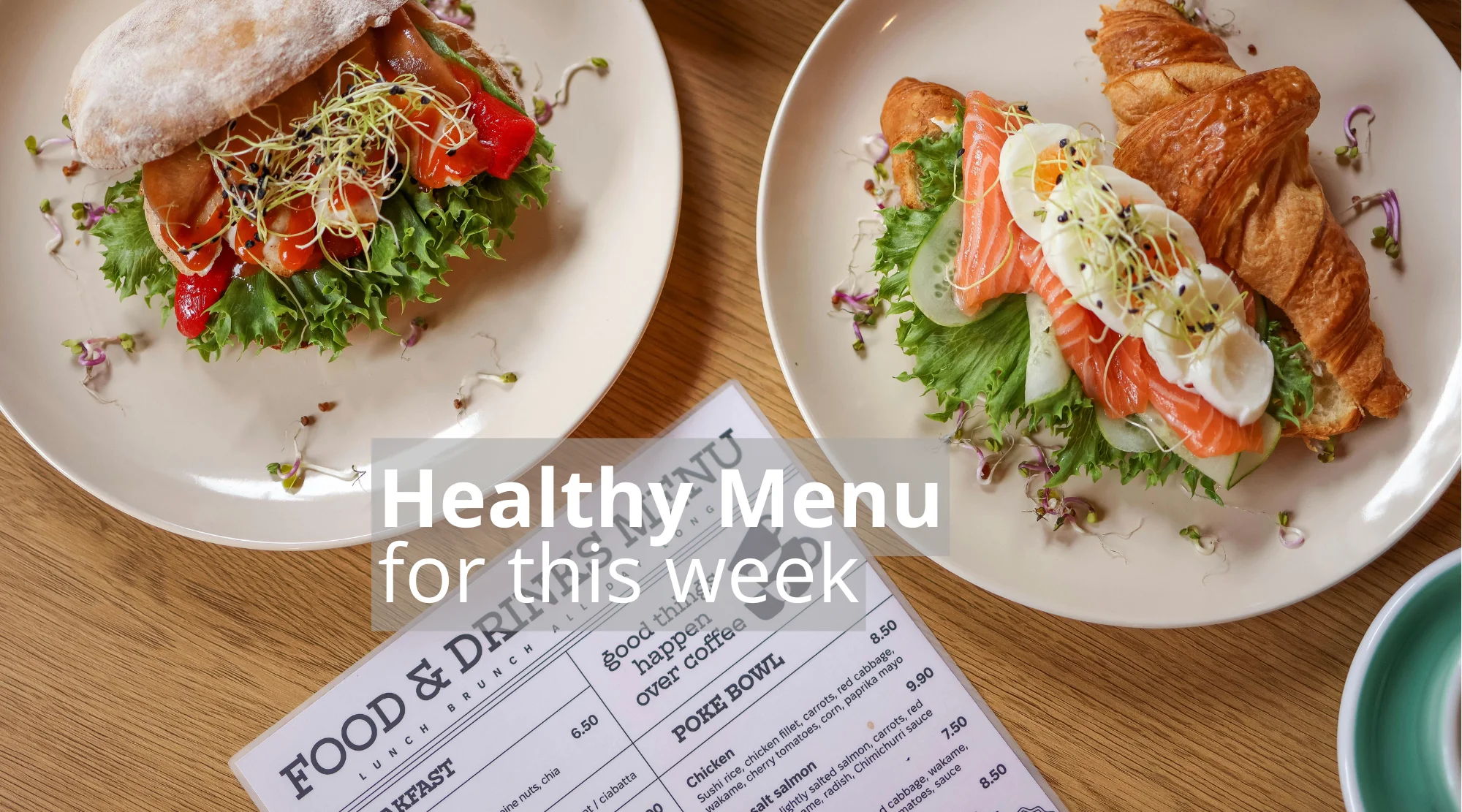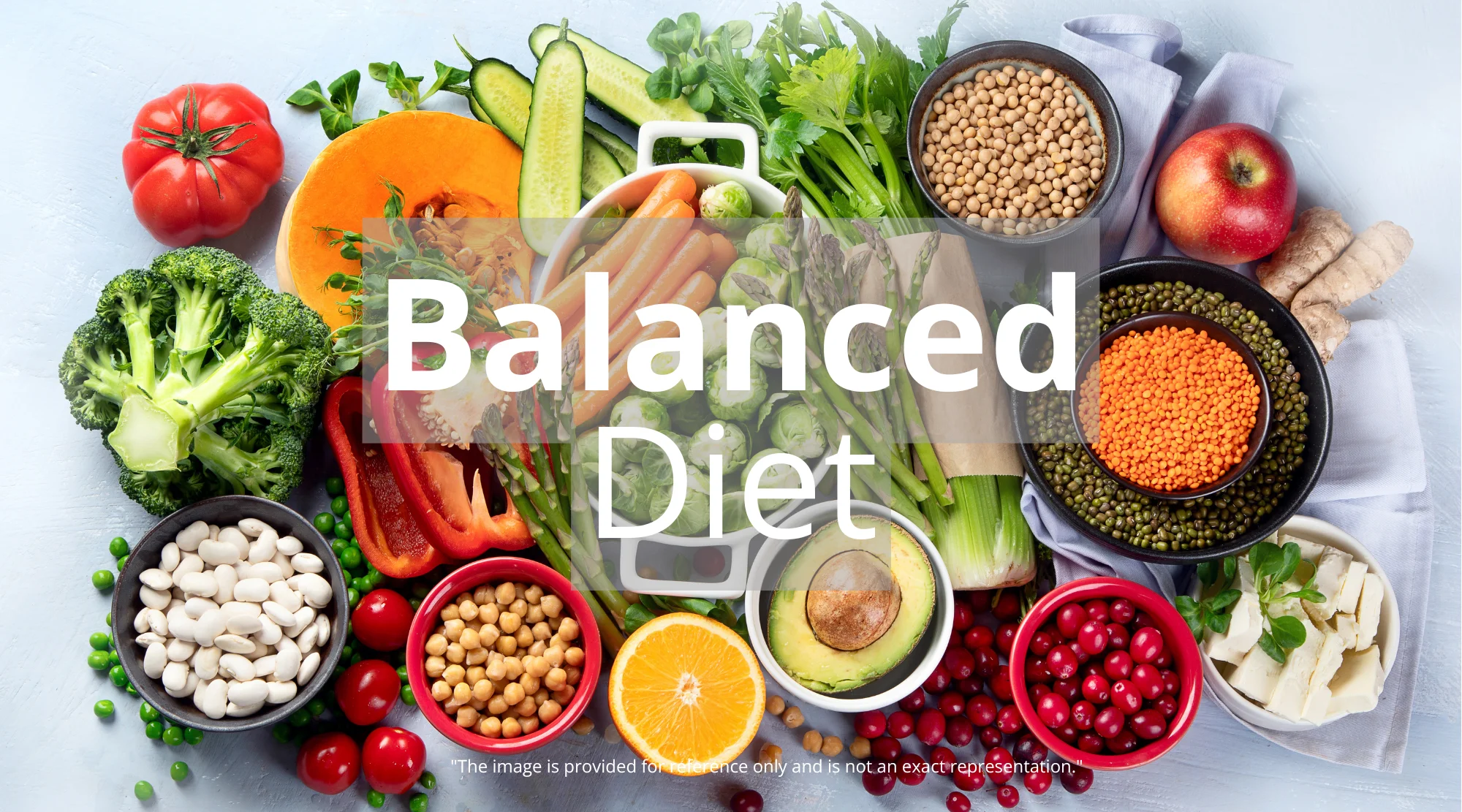Embrace a Healthier You: A Delicious and Balanced Weekly Meal Plan
Are you striving for a healthier lifestyle but find yourself overwhelmed by meal planning? Look no further! This comprehensive weekly meal plan is meticulously crafted to guide you through delicious, balanced, and easy-to-prepare meals. Focusing on a variety of lean proteins, fresh vegetables, and wholesome carbohydrates, this plan provides the nutritional foundation for a vibrant and energetic life. Healthy Eating: A Week of Delicious Meals is not just a meal plan; it’s a pathway to sustainable well-being.

The Pillars of a Balanced Diet
Before diving into the week’s menu, let’s briefly touch upon the core principles of a balanced diet. A healthy meal plan is built on the foundation of:
- Lean Proteins: Essential for muscle repair, growth, and overall cellular function. Include options like chicken, fish, eggs, and lean cuts of meat.
- Complex Carbohydrates: Provide sustained energy and are rich in fiber. Think whole grains, such as brown rice and quinoa, plus vegetables.
- Healthy Fats: Crucial for hormone production, brain health, and nutrient absorption. Incorporate sources like avocados, nuts, and olive oil.
- Abundant Vegetables and Fruits: Packed with vitamins, minerals, and antioxidants to boost your immune system and overall health.
Monday: Starting the Week Right
Lunch: Grilled chicken breast served with a vibrant spinach salad, hard-boiled egg, and shredded carrots. This combination provides a perfect blend of protein, vitamins, and fiber.
Dinner: Baked cod with roasted butternut squash and steamed broccoli. This meal is a great source of omega-3 fatty acids and essential nutrients.
Snacks: Consider a handful of almonds and a piece of fruit, such as an apple.
Tuesday: Energizing Your Day
Lunch: Lean beef stir-fry with a mix of bell peppers, onions, and snow peas. This is a flavorful and nutrient-dense meal.
Dinner: A warm chicken salad featuring chickpeas and spinach.
Snacks: Greek yogurt with berries.
Wednesday: Mid-Week Meal Prep
Lunch: Grilled chicken breast paired with a serving of brown rice.
Dinner: Mushroom and spinach omelet, a fantastic and light dinner option.
Snacks: A small serving of trail mix.
Thursday: Fueling the Second Half of the Week
Lunch: Baked chicken with a side of sweet potato.
Dinner: Tuna salad with hard-boiled eggs and a variety of fresh vegetables.
Snacks: A piece of fruit and a handful of walnuts.
Friday: Celebrating the End of the Workweek
Lunch: Grilled lean beef with a side salad featuring chickpeas.
Dinner: Baked fish with a side of leafy greens and avocado.
Snacks: A serving of cottage cheese and a small portion of mixed nuts.
Saturday: Weekend Flexibility
Lunch: Grilled chicken with a medley of colorful vegetables.
Dinner: Homemade lentil burgers.
Snacks: Enjoy a smoothie with fruits, or yogurt and a handful of nuts.
Sunday: Preparing for the Week Ahead
Lunch: Grilled steak with fresh, vibrant salads.
Dinner: Vegetable omelet with a side salad.
Snacks: A piece of fruit or yogurt.
Incorporating Breakfast and Snacks
This weekly meal plan focuses primarily on lunch and dinner. However, remember that including healthy breakfast and snacks is vital to maintaining steady energy levels and preventing overeating. Here are some suggestions:
- Breakfast Options: Oatmeal with berries and nuts, whole-grain toast with avocado and a poached egg, Greek yogurt with fruit and granola.
- Snack Options: A small handful of nuts, a piece of fruit, vegetable sticks with hummus, Greek yogurt, or a protein shake.
The Benefits of a Well-Planned Diet
Implementing a structured meal plan offers numerous benefits:
- Weight Management: A balanced diet can help you achieve and maintain a healthy weight.
- Increased Energy Levels: Proper nutrition provides the fuel your body needs to function optimally.
- Improved Mood: A healthy diet is often linked to improved mood and reduced risk of depression.
- Reduced Risk of Chronic Diseases: Eating a balanced diet lowers the risk of developing chronic diseases like heart disease, type 2 diabetes, and some cancers.
- Enhanced Overall Well-being: A well-planned diet supports your physical and mental health, contributing to a higher quality of life.
Customizing Your Meal Plan
One of the best aspects of this meal plan is its adaptability. You can tailor it to fit your specific preferences and dietary needs. Here are a few tips:
- Seasonality: Adjust the vegetables and fruits based on what’s in season for optimal freshness and flavor.
- Protein Swaps: Feel free to substitute proteins. For example, you can replace chicken with turkey or fish with shrimp.
- Vegetarian Options: Adapt the plan to vegetarian needs by swapping meats for plant-based protein sources, such as lentils, beans, tofu, or tempeh.
- Portion Control: Be mindful of portion sizes to ensure you’re consuming the right amount of calories. Consider using a food scale to measure your servings accurately.
- Embrace Variety: Don’t be afraid to try new recipes and experiment with different flavors to keep things interesting.
Tips for Successful Meal Planning
Creating and sticking to a meal plan can be easier with these simple tips:
- Plan Ahead: Set aside some time each week to plan your meals and create a grocery list.
- Grocery Shopping: Stick to your list to avoid impulsive purchases of unhealthy foods.
- Meal Prep: Dedicate a few hours on the weekend to prepare some components of your meals, like chopping vegetables or cooking grains.
- Stay Hydrated: Drink plenty of water throughout the day.
- Listen to Your Body: Pay attention to your hunger and fullness cues.
- Be Patient: It takes time to establish new eating habits. Be kind to yourself, and don’t get discouraged by occasional slip-ups.
Beyond the Plate: Complementary Strategies
While a healthy diet is fundamental, it’s even more effective when paired with other healthy habits.
- Regular Exercise: Incorporate regular physical activity into your routine. Engage in activities you enjoy, such as walking, running, swimming, or strength training. Check out the article “Fitness After 40: The Ultimate Guide to Cardio and Strength Training” for some ideas. Strength training can be especially helpful to seniors, you can find tips in the article “Strength Training for Seniors: 7 Common Mistakes to Avoid”.
- Adequate Sleep: Aim for 7-9 hours of quality sleep per night.
- Stress Management: Practice stress-reducing techniques, such as meditation, yoga, or deep breathing exercises.
- Mindful Eating: Pay attention to your food, savor each bite, and eat slowly.
- Professional Guidance: Consult a registered dietitian or nutritionist for personalized advice and support.
Staying Motivated: The Path to Long-Term Success
Maintaining a healthy diet is a journey, not a destination. Here are some strategies to keep you on track:
- Set Realistic Goals: Start with small, achievable goals and gradually increase the challenge.
- Track Your Progress: Keep a food journal or use a fitness tracking app to monitor your eating habits and physical activity.
- Celebrate Your Wins: Acknowledge your accomplishments, no matter how small.
- Seek Support: Connect with friends, family, or a support group to stay motivated.
- Don’t Give Up: Everyone slips up occasionally. Learn from your mistakes and get back on track as soon as possible.
Exploring the Benefits of Protein and Vegetables
The cornerstone of this meal plan lies in its emphasis on high-quality protein sources and a rainbow of vegetables. Let’s take a closer look at why these food groups are so crucial:
- Protein Powerhouse: Protein is vital for various bodily functions, including building and repairing tissues, producing enzymes and hormones, and supporting a healthy immune system. Lean protein sources, like those highlighted in this meal plan, also provide essential amino acids.
- Vegetable Variety: Vegetables are packed with vitamins, minerals, antioxidants, and fiber. They’re low in calories and high in nutrients, making them the perfect addition to any healthy diet. Different colored vegetables offer diverse nutrients, ensuring a wide range of health benefits.
Making Informed Choices: Understanding Food Labels
Navigating the grocery store can be challenging. Understanding food labels can help you make informed choices and ensure you’re selecting foods that support your health goals:
- Serving Size: Always check the serving size on the label and adjust your portion accordingly.
- Calories: Pay attention to the calorie count per serving.
- Macronutrients: Look at the grams of protein, carbohydrates, and fats.
- Micronutrients: Check the percentage of Daily Value (%DV) for vitamins and minerals.
- Ingredients: Avoid foods with excessive added sugars, sodium, and unhealthy fats.
Recipes to Get You Started
Here are a few quick and easy recipes to jumpstart your healthy eating journey:
- Grilled Chicken with Roasted Vegetables: Marinate chicken breasts in your favorite herbs and spices. Grill or bake until cooked through. Roast a mix of vegetables, such as broccoli, bell peppers, and onions, with olive oil and seasoning.
- Baked Cod with Quinoa and Asparagus: Season cod fillets with lemon juice, salt, and pepper. Bake until flaky. Cook quinoa according to package instructions. Steam asparagus until tender-crisp.
- Lentil Soup: Sauté onions, carrots, and celery. Add lentils, vegetable broth, and spices. Simmer until lentils are tender.
The Future of Health and Wellness
The field of health and wellness is ever-evolving. Advances in technology and scientific research are constantly reshaping our understanding of optimal health. Embrace these advancements, staying informed about the latest dietary recommendations and wellness strategies.
- Personalized Nutrition: Explore the concept of personalized nutrition, which tailors dietary recommendations based on individual genetic makeup and lifestyle factors.
- Mind-Body Connection: Recognize the importance of the mind-body connection and practice mindfulness, meditation, and other techniques to promote holistic well-being.
- Technological Integration: Explore the use of technology, such as fitness trackers, health apps, and online resources, to monitor your health, track your progress, and stay motivated.
- Holistic Approaches: The health landscape is leaning towards holistic approaches to well-being. If you want more information, you can read about Alice Walton’s Medical School: Revolutionizing Healthcare with a Holistic Approach.
Conclusion: Your Path to a Healthier Tomorrow
This weekly meal plan provides a practical, delicious, and sustainable framework for improving your health and well-being. By embracing a balanced diet filled with lean proteins, complex carbohydrates, healthy fats, and an abundance of fruits and vegetables, you’re setting the stage for a healthier, more energetic life. Remember to listen to your body, adapt the plan to your needs, and celebrate your progress along the way. A journey toward a healthier you starts today!
If you want to learn more about a balanced life style you can read [













5 comments